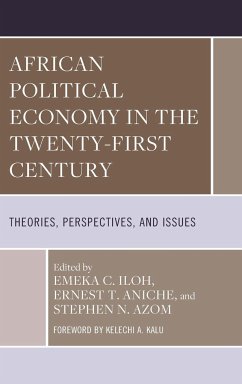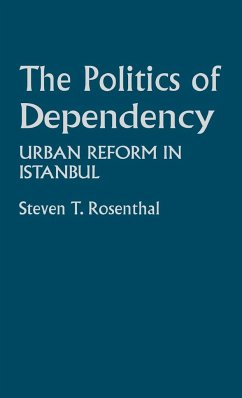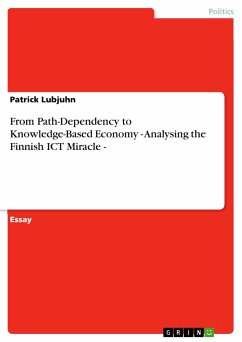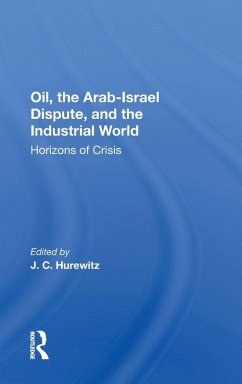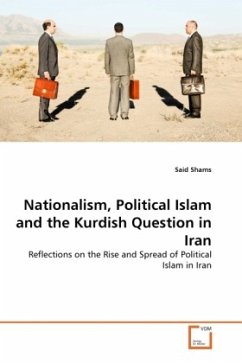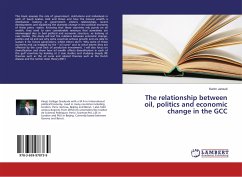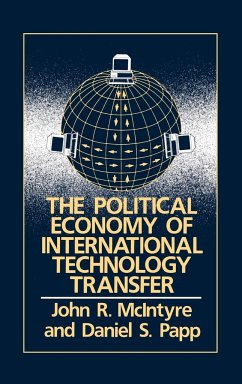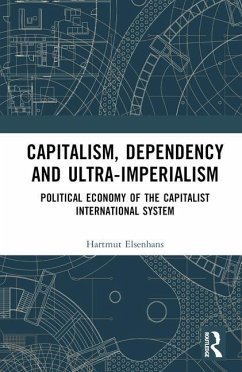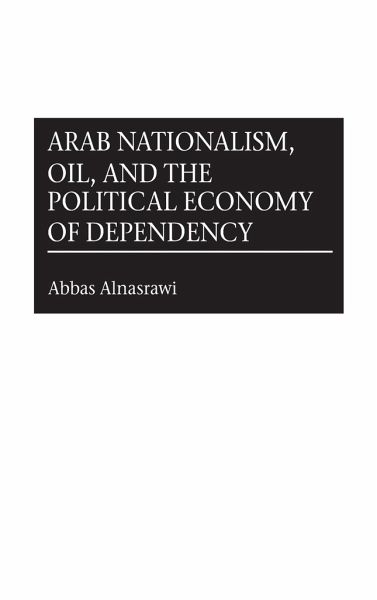
Arab Nationalism, Oil, and the Political Economy of Dependency
Versandkostenfrei!
Versandfertig in 1-2 Wochen
87,99 €
inkl. MwSt.

PAYBACK Punkte
44 °P sammeln!
This pathbreaking survey analyzes a complex subject and is especially timely at this critical juncture of international affairs. Abbas Alnasrawi covers the field from the emergence of modern Arab economic dependence to the present mid-eastern impasse. Alnasrawi contends that Arab economic development was shaped by Arab nationalist thought, the emergence of the oil industry in the Arab region, and the integration of Arab economies into the international economic system. The volume takes a clear-sighted look at the evolution of each of the three forces and details their impact on the development...
This pathbreaking survey analyzes a complex subject and is especially timely at this critical juncture of international affairs. Abbas Alnasrawi covers the field from the emergence of modern Arab economic dependence to the present mid-eastern impasse. Alnasrawi contends that Arab economic development was shaped by Arab nationalist thought, the emergence of the oil industry in the Arab region, and the integration of Arab economies into the international economic system. The volume takes a clear-sighted look at the evolution of each of the three forces and details their impact on the development of the Arab economies, along with their present status. The contradictions between the needs of the single state and the needs of Arab economic integration, Arab unity, and pan-Arab economic planning receive special attention. Alnasrawi develops the concept of derivative dependency, illustrating the extent to which the economies of the non-oil states are being affected by what happens to the economies of the oil-producing states. The final chapter presents a detailed picture of the forces that led to the Iraqi invasion of Kuwait and integrates the events of August 1990 with the main themes of the book. Arab economic development is addressed in ten chapters that cover the period from the first phase of Arab dependency during the Ottoman period, 1500-1800, until the present time. Discussions of Arab dependency in the context of world capitalism, the emergence of modern Arab nationalism, and current Arab economic thought and writings are the focus of the first two chapters. Arab nationalism and Arab economic unity, multinational oil and the deepening of Arab dependency, and the Arab oil weapon are considered in the next three chapters. Chapter six examines the role of Saudi Arabia and the United States in the fall of OPEC. In The 1980s, The Gulf War, and the Myth of Arab Oil Power, Alnasrawi explores the role of stockpiles, price revolution to price collapse, and the determinants of Saudi oil policy. Chapter eight takes a look at the dimensions of Arab economic dependency and closes with some observations on the political economy of Arab dependency. The book concludes with a chapter on the current problems of the Arab economies and their future prospects. Finally, the epilogue sheds new light on the present situation in Kuwait and shows how the Iraqi invasion supports the main themes of the volume. This in-depth review of Arab economic development puts this subject into a manageable context for students of Third World development, international relations, multinational oil policy, and foreign policy. It will also be an invaluable resource for courses dealing with the economics of oil, Middle East economic development, international economic problems, and international political economy.



